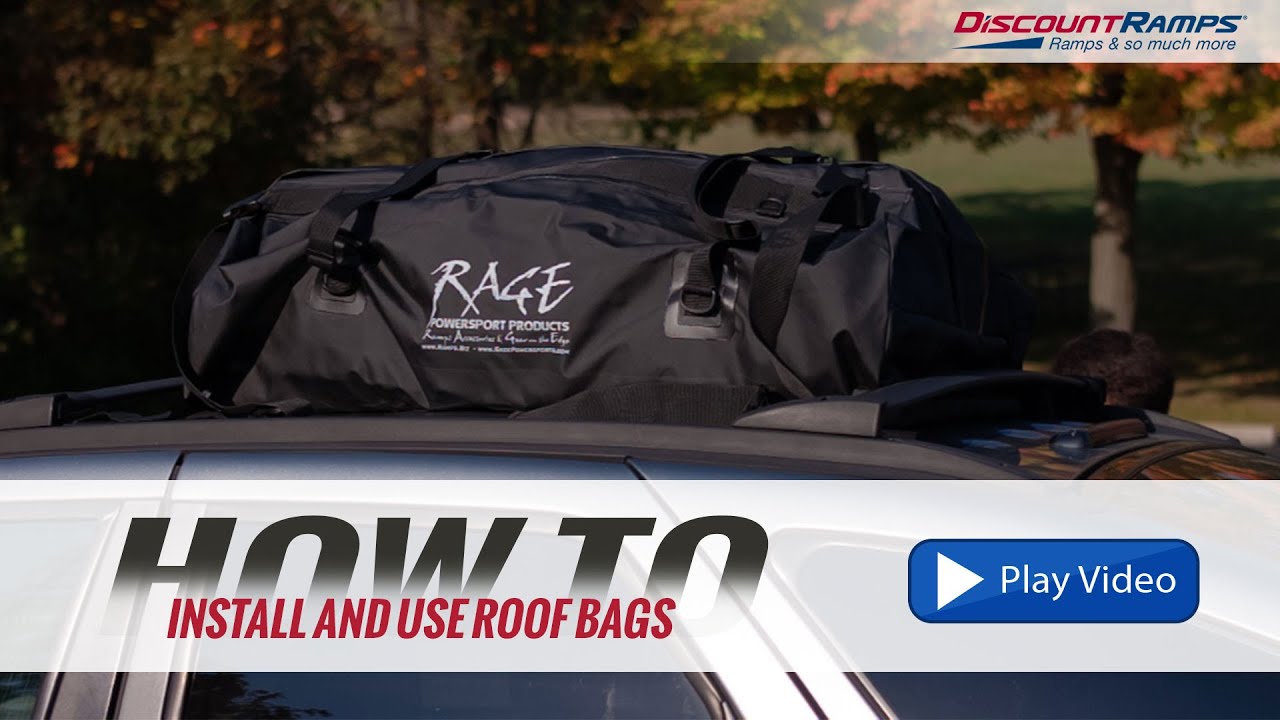In this article, we’ll discuss how you can easily attach a roof bag using only side rails. You’ll learn step-by-step instructions on how to securely fasten the roof bag to your vehicle, ensuring your belongings are safe and protected during travel. We’ll also provide some invaluable tips to make the process even more hassle-free. So, if you’re wondering how to attach a roof bag with just side rails, keep reading and we’ll guide you through it!
How to Attach a Roof Bag with Side Rails
Properly attaching a roof bag with side rails is essential for safe and secure transportation of belongings. Whether you’re planning a road trip or need extra storage space for your outdoor gear, a roof bag with side rails can provide the solution. In this guide, we’ll walk you through the step-by-step process of attaching a roof bag with side rails, as well as provide alternative attachment methods, tips for secure attachment, and the benefits of using a roof bag with side rails.
Preparing to Attach a Roof Bag with Side Rails
Before you begin the attachment process, there are a few important steps to take to ensure a successful and secure installation.
Determining the Type of Roof Bag
The first step is to determine the type of roof bag you’ll be attaching. Roof bags come in various sizes and styles, including soft-shell and hard-shell options. Consider the size and weight capacity of the bag, as well as any specific features that may be necessary for your needs, such as waterproofing or UV resistance.
Measuring the Side Rails
Next, you’ll need to measure the length and width of your vehicle’s side rails. This will help you determine the appropriate size and fit for your roof bag. Record these measurements for reference during the installation process.
Checking the Load Capacity of Your Side Rails
It’s important to check the load capacity of your vehicle’s side rails to ensure they can support the weight of the roof bag and its contents. Consult your vehicle’s owner manual or contact the manufacturer for this information. Exceeding the load capacity can be dangerous and may result in damage to your vehicle.
Gathering the Necessary Tools and Materials
Before you begin attaching the roof bag, gather all the necessary tools and materials. These may include a tape measure, mounting brackets or rails (if not included with the roof bag), screws or bolts, a screwdriver or wrench, and any additional accessories required for your specific roof bag and vehicle.
Installing the Roof Bag with Side Rails
Once you’ve prepared and gathered all the necessary tools and materials, it’s time to install the roof bag with side rails. Follow these steps for a secure installation:
Cleaning and Preparing the Side Rails
Start by thoroughly cleaning and drying the side rails of your vehicle. Remove any dirt, dust, or debris that may interfere with the attachment process. Use a mild cleaning solution and a soft cloth to avoid scratching the rails.
Positioning the Roof Bag on the Side Rails
Place the roof bag on top of the side rails, positioning it in the desired location. Ensure that it is centered and aligned with the vehicle. Take into consideration any aerodynamic features or rear spoilers that may affect the positioning of the roof bag.
Securing the Roof Bag to the Side Rails
Attach the mounting brackets or rails provided with the roof bag to the side rails of your vehicle. Follow the manufacturer’s instructions for proper placement and attachment of these brackets or rails. Use screws or bolts to securely fasten them in place.
Ensuring Proper Tightness and Stability
Once the roof bag is attached to the side rails, check for proper tightness and stability. Ensure that all mounting brackets or rails are securely fastened and tightened. Wiggle the roof bag to test its stability and make any necessary adjustments to prevent shifting or loosening during travel.
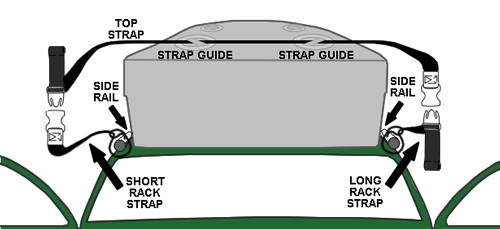
This image is property of www.roofbag.com.
Alternative Attachment Methods for Roof Bags with Side Rails
While attaching the roof bag directly to the side rails is the most common method, there are alternative attachment methods you can consider depending on your vehicle and roof bag.
Using Roof Rack Crossbars with Side Rails
If your vehicle is equipped with roof rack crossbars in addition to side rails, you can attach the roof bag to the crossbars for added stability and support. This method is especially useful for heavy or bulky items. Use mounting brackets or rails designed for roof rack crossbars to attach the roof bag securely.
Using Universal Roof Rack Mounting Kits
Universal roof rack mounting kits are available for vehicles that do not have factory-installed side rails or roof rack crossbars. These kits typically include adjustable clamps or straps that attach to the vehicle’s door frames or rain gutters. Follow the manufacturer’s instructions for proper installation and ensure a secure attachment of the roof bag.
Using Ratchet Straps or Bungee Cords for Additional Security
For added security and peace of mind, you can use ratchet straps or bungee cords to further secure the roof bag to the side rails or roof rack crossbars. Wrap the straps or cords around the bag and attach them to the rails or crossbars, tightening them to ensure a secure hold. This method can prevent shifting or movement of the bag during travel.
Tips for Securely Attaching a Roof Bag with Side Rails
To ensure a secure and safe attachment of your roof bag with side rails, consider the following tips:
Distributing the Weight Evenly
When loading your roof bag, distribute the weight evenly throughout the bag. This will help prevent unbalanced loads and potential damage to your vehicle or belongings. Place heavier items in the center and lighter items towards the edges.
Securing Loose Items Inside the Roof Bag
Before attaching the roof bag to the side rails, secure any loose or fragile items inside the bag. This will prevent them from shifting or getting damaged during transit. Use packing cubes, straps, or dividers to keep items organized and secure.
Checking the Roof Bag’s Secure Attachment Before Driving
Always double-check the roof bag’s attachment before you begin driving. Ensure that all mounting brackets or rails are securely fastened and that the roof bag is stable. Give it a gentle tug to test its stability and make any necessary adjustments.
Monitoring the Roof Bag during the Journey
Periodically monitor the roof bag during your journey. Pull over in a safe location and check for any signs of shifting, loosening, or wear. Make any necessary adjustments or tighten the mounting brackets or rails if needed.
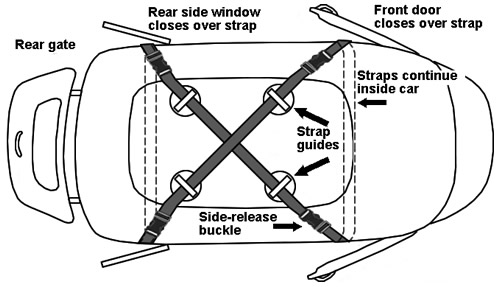
This image is property of www.roofbag.com.
Removing and Storing the Roof Bag with Side Rails
Once you’ve reached your destination or no longer require the roof bag, follow these steps to remove and store it properly:
Removing the Roof Bag from the Side Rails
Start by loosening the mounting brackets or rails that attach the roof bag to the side rails. Carefully lift the roof bag off the side rails, ensuring that it is fully detached. Place it on a clean and dry surface.
Cleaning and Drying the Roof Bag
Clean the roof bag thoroughly using a mild cleaning solution and a soft cloth. Pay attention to any stains, dirt, or debris that may have accumulated during your journey. Rinse off the cleaning solution and allow the bag to dry completely before storing it.
Storing the Roof Bag Properly
Fold or roll the roof bag neatly, removing any excess air to minimize its size. Place it in a storage bag or container to protect it from dust, moisture, and pests. Store the roof bag in a cool, dry place away from direct sunlight.
Common Mistakes to Avoid when Attaching a Roof Bag with Side Rails
To ensure a successful attachment and safe transportation, avoid the following common mistakes:
Overloading the Roof Bag or Side Rails
Exceeding the weight limit of your roof bag or side rails can lead to structural damage and compromise the safety of your belongings. Always adhere to the load capacity guidelines provided by the manufacturer.
Using Incompatible or Low-Quality Roof Bags
Using a roof bag that is not compatible with your vehicle’s side rails may result in an insecure attachment or damage to your vehicle. Invest in a high-quality roof bag that is designed for your specific vehicle and intended use.
Neglecting to Securely Fasten the Roof Bag
Failing to properly secure the roof bag to the side rails can lead to shifting, loosening, or even detachment during travel. Double-check that all mounting brackets or rails are securely fastened and tightened.
Failing to Check the Roof Bag’s Stability
Before driving, always check the stability of the roof bag by giving it a gentle tug or shake. If it feels loose or unstable, make the necessary adjustments before hitting the road.
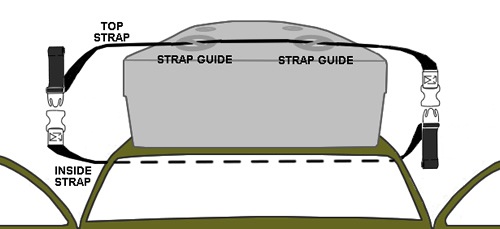
This image is property of www.roofbag.com.
Benefits of Using a Roof Bag with Side Rails
Attaching a roof bag with side rails offers several benefits for travelers and outdoor enthusiasts:
Increased Storage Space
A roof bag with side rails provides additional storage space for luggage, sports equipment, camping gear, and other bulky items. This allows for a more comfortable and spacious interior for passengers.
Versatility for Various Types of Vehicles
Roof bags with side rails can be attached to a wide range of vehicles, including SUVs, sedans, hatchbacks, and minivans. They offer versatility and compatibility with different roof designs.
Protection of Belongings during Transport
Roof bags are designed to be weather-resistant and protect your belongings from rain, snow, dirt, and other elements. This ensures that your items arrive at your destination in the same condition as when you packed them.
Ease of Attachment and Removal
Attaching and removing roof bags with side rails is a relatively straightforward process. With the right tools and proper instructions, you can easily install or uninstall the roof bag whenever needed.
FAQs about Attaching a Roof Bag with Side Rails
Here are some frequently asked questions regarding attaching a roof bag with side rails:
Can I attach a roof bag with just side rails?
Yes, a roof bag can be attached directly to the side rails of your vehicle. However, make sure to check the load capacity of your side rails and choose a roof bag that is compatible with your vehicle’s design.
What is the maximum weight capacity of side rails?
The maximum weight capacity of side rails varies depending on the vehicle’s make and model. Consult your vehicle’s owner manual or contact the manufacturer for specific information.
Can I attach a roof bag without any side rails?
If your vehicle does not have side rails, you can consider alternative attachment methods such as roof rack crossbars or universal roof rack mounting kits. These options provide secure attachment points for your roof bag.
How do I choose the right size roof bag for my side rails?
Measure the length and width of your side rails and compare them to the dimensions of the roof bag you are considering. Choose a roof bag that is slightly smaller than your side rails to ensure a proper fit.
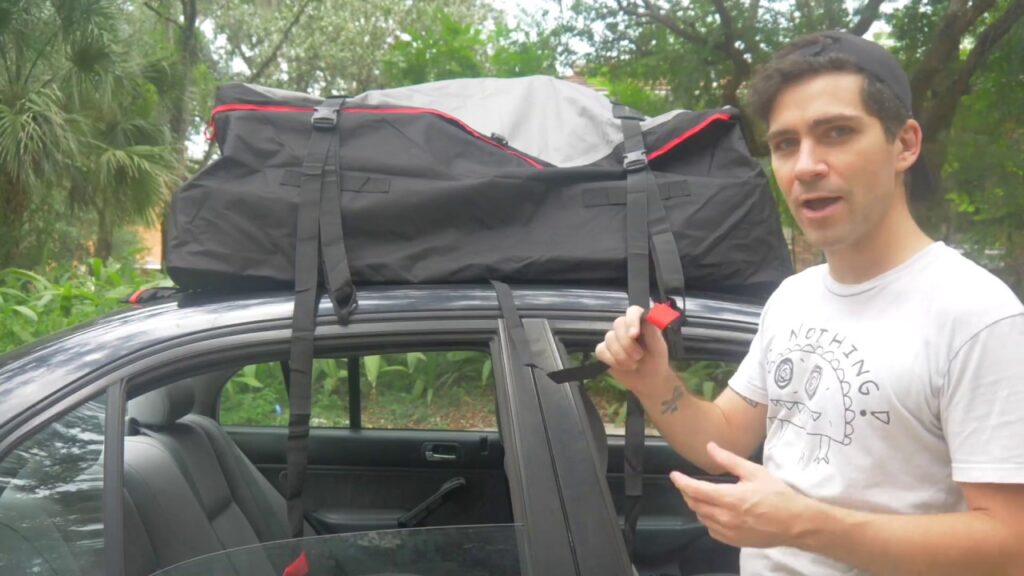
This image is property of i.ytimg.com.
Conclusion
Attaching a roof bag with side rails is a practical and convenient way to increase your vehicle’s storage capacity and transport belongings safely. By following the steps outlined in this guide and considering the alternative attachment methods, you can confidently utilize the increased storage space offered by a roof bag with side rails. Remember to always prioritize weight distribution, stability, and checking the roof bag’s attachment before embarking on your journey. With proper installation and secure attachment, you can enjoy a worry-free and enjoyable travel experience.

